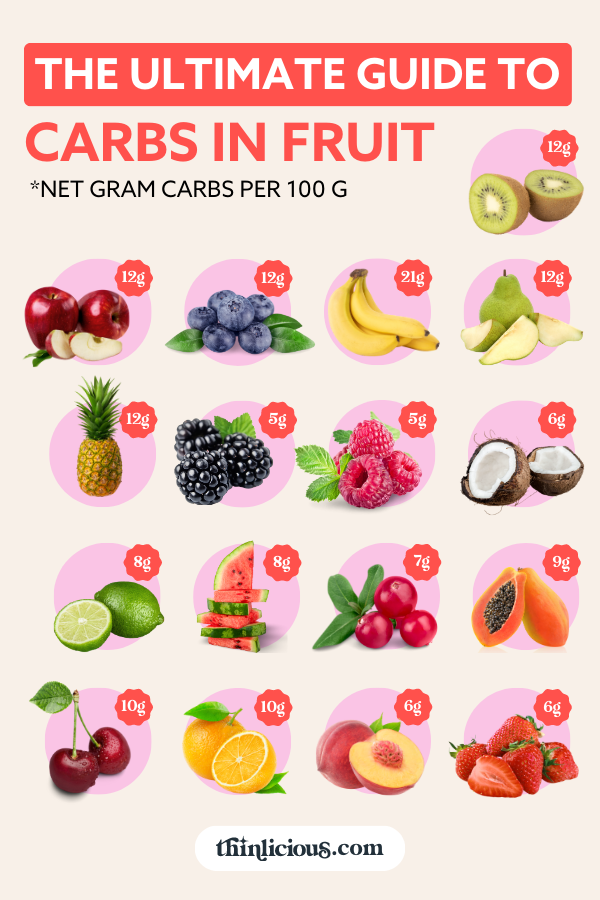Fruits: Low Carb or High? Find Out Now

Ever wondered why fruits seem to be a double-edged sword when you're on a healthy low carb diet? They're nature's candy, packed with vitamins and minerals, but the million-dollar question is, do fruits have carbs? Let's dive in and unwrap the truth about fruits carbohydrates in this flavorful journey through the world of fruit nutrition.
The Sweet Truth about Fruits Carbohydrates
Imagine fruits as little sweet packets from nature. Inside each packet, you'll find a mixture of natural sugars, vitamins, and fiber. The primary carb culprits in fruits are simple sugars like fructose (fruit sugar) and glucose. But before we start worrying, let's break down the numbers.
The Carb Balance: How Much Is Too Much?
Most fruits contain between 5 to 30 grams of carbohydrates per serving. For instance, a medium apple has about 25 grams of carbohydrates, while a cup of berries has around 15 grams. This might seem high if you're aiming for a strict healthy low carb diet, but remember, not all carbohydrates are created equal. The fiber and water content in fruits can actually slow down the absorption of these sugars, making them less impactful on your blood sugar levels.
Avoid the Carb Overload: Portion Control Is Key
When it comes to fruits, portion control is your best friend. The key is to enjoy them in moderation. Instead of a whole apple, try half an apple. Instead of a large bowl of mixed berries, stick to a cup. These small adjustments can make a big difference in managing your fruit carbohydrates intake while still reaping the benefits of a fruit-based diet.
The Best Low-Carb Fruits: Your Go-To List
If you're wary of doing an excessive intake of fructose, opt for low-carb fruits. Berries, for example, are packed with antioxidants and are relatively low in carbohydrates compared to other fruits. A cup of strawberries has only about 8 grams of carbs. Kiwis are another great option, with just 11 grams of carbs per medium fruit. Lemons and limes are almost carb-free and can add a zesty twist to your meals. Grapes, on the other hand can be associated with a higher glycemic index, thus portion control is essential.
The Big Misconception: All Fruits Are Equal?
It’s essential to clear up a common misconception about fruit carbohydrates. You could easily assume all fruits are “good” for you like berries are. However, tropical fruits such as mangoes, pineapples, and bananas are higher in carbohydrates and natural sugars. For example, one medium banana can have around 27 grams of carbs. For a person adhering to a stringent fruit-based diet or low carb diet , it is wise to be prudent with the intake of these fruits, especially bananas, pineapples, and mangoes. My recommendation? Keep these fruits as occasional treats rather than daily staples.
Expert Insights: What Science Says
When it comes to understanding fruits carbohydrates, science backs up the idea that balance is key. A study published in the Journal of Nutrition emphasizes that moderate fruit consumption can lower the risk of chronic diseases without significantly impacting blood sugar levels. Another insightful resource can be found in the Mayo Clinic, which discusses the benefits of incorporating a variety of fruits into your diet, highlighting their essential role in a balanced, nutritious eating plan.
Maximizing Fruit Nutrition: Tips and Tricks
So, how do you enjoy fruits without compromising your carb goals? Here are a few tips:
1. Eat fruits whole rather than juiced. Juicing removes the beneficial fiber and concentrates the natural sugars, leading to a quicker spike in blood sugar levels. Instead consider juicing smoothy methodologies that ensures you ingest the full goodness of the fruit
2. Pair fruits with other foods. Combining fruits with protein or healthy fats can help balance the carb load and slow down sugar absorption. For example, a small apple with a spoon of almond butter.
3. Time your fruit intake. Eating fruits earlier in the day, perhaps as a snack or with breakfast, can help your body better manage the sugar load. Again you should consider having a foods with Fat, Protein, Carbs to help with the stabilisation , both consuming with a food or as a subsequent meal.
These simple strategies can enhance your enjoyment of fruits while keeping your carb intake in check.
Fruits Can Be Enjoyed: Embrace the Balance
In summary, fruits do have carbohydrates, but that doesn't mean you have to avoid them entirely. The key is to choose wisely, control portions of fruits, and balance your intake. Remember, fruits are nature's gift, packed with essential vitamins, minerals and antioxidants. They deserve a place in your diet, but like any good thing, moderation is vital.
So, next time you reach for a piece of fruit, do so with confidence. Enjoy the sweetness, savor the flavors, and indulge in the nutrients. Your body will thank you for the balance.
Frequently Asked Questions (FAQs)
Are all fruits high in carbs?
No, not all fruits are high in carbs. Berries, for example, are generally lower in carbs compared to tropical fruits like mangoes and bananas.
Can I eat fruits on a low-carb diet?
Yes, you can eat fruits on a low-carb diet, but it's important to choose low-carb fruits and control your portions and consumption.
Which fruits are best for a low-carb diet?
The best low-carb fruits include berries (strawberries, raspberries, and blueberries), kiwis, lemons, and limes.
How can I include fruits in my diet without overloading on carbs?
To include fruits in your diet without overloading on carbs, opt for low-carb fruits, stick to smaller portions, and pair fruits with other foods like protein and healthy fats.
Do fruits have other benefits besides carbohydrates?
Absolutely! Fruits are rich in vitamins, minerals, and antioxidants. They provide essential nutrients that support overall health and can help prevent chronic diseases.
```
0 Response to " Fruits: Low Carb or High? Find Out Now"
Post a Comment